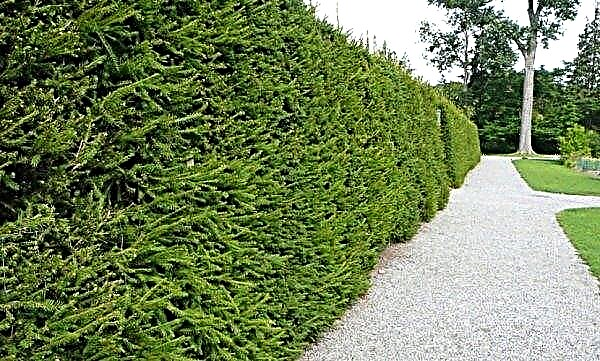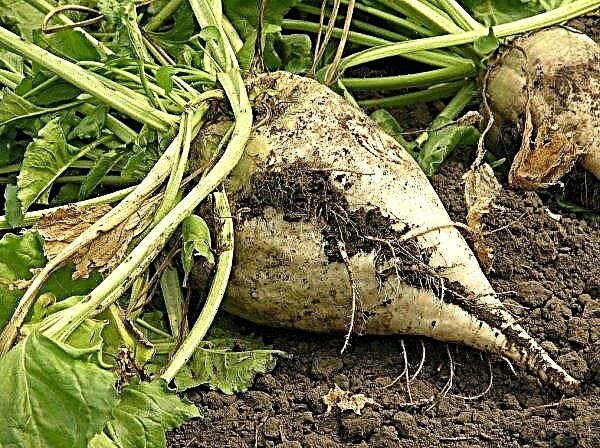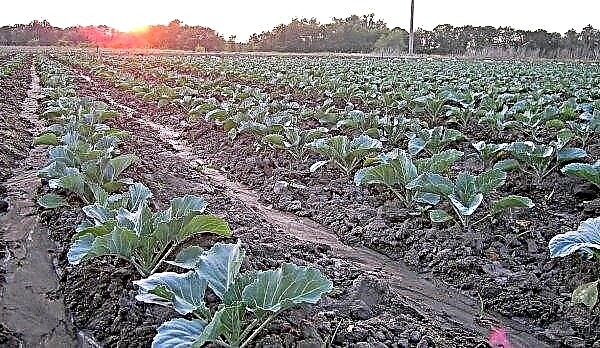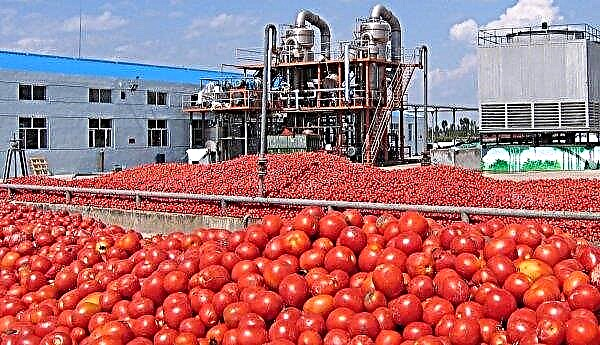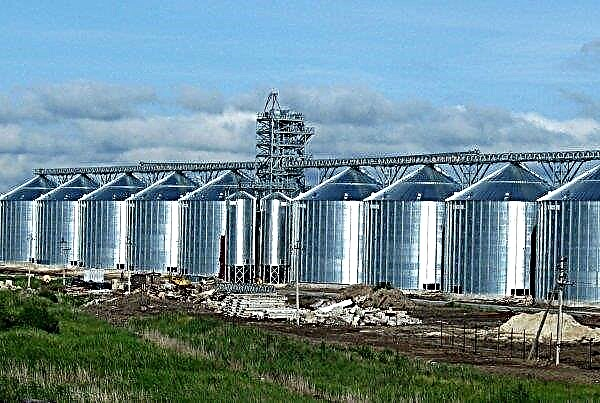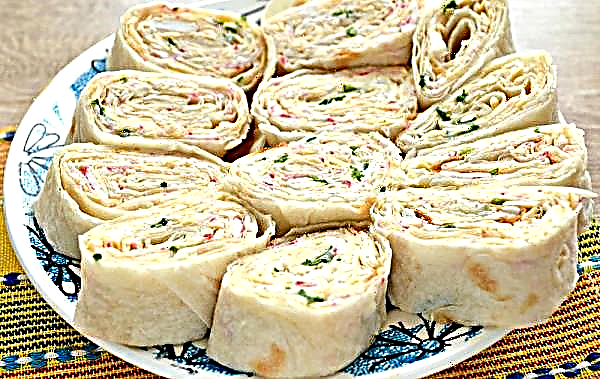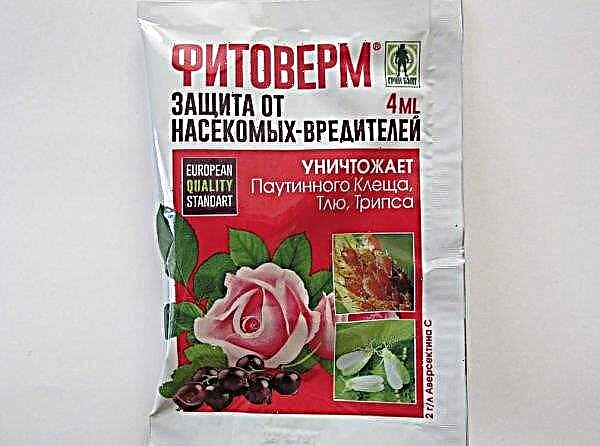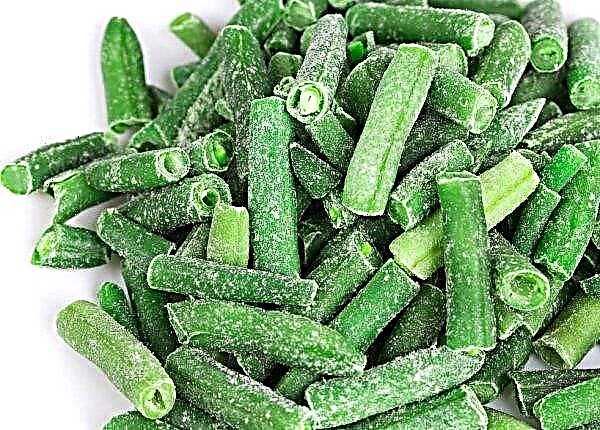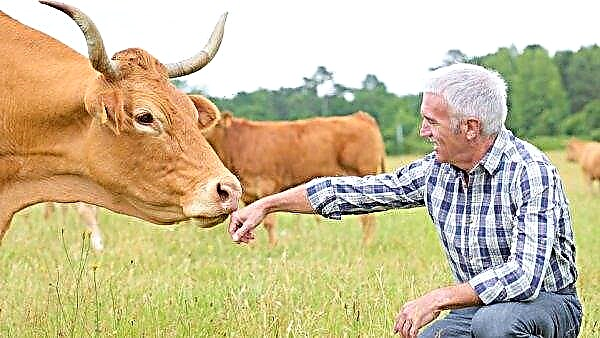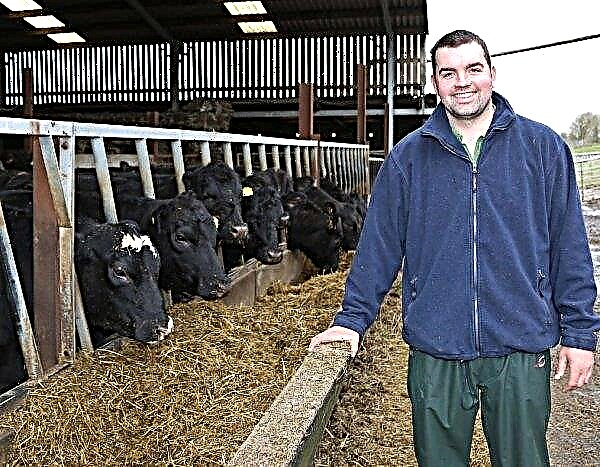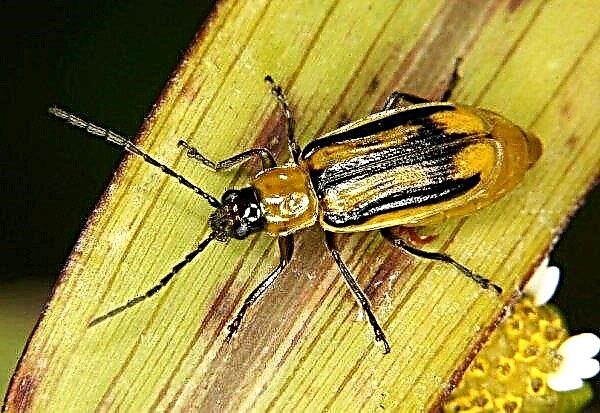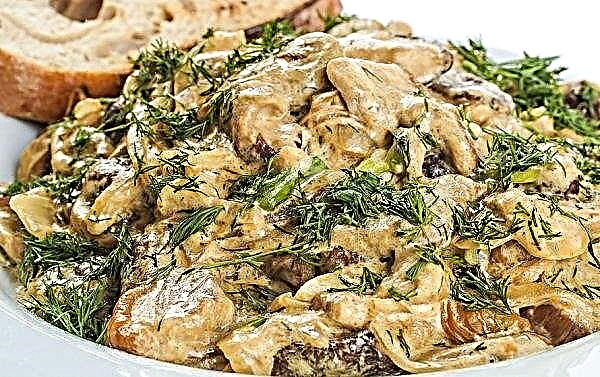White cabbage Dominant is not yet a popular variety. Many gardeners prefer to plant traditional varieties. But, having learned from the article about the characteristics and advantages of this variety, they will probably change their attitude and the Dominant will take its rightful place in private gardens and fields.
Selection history
The white cabbage variety Dominant F1 is a first-generation hybrid, as indicated by the letters F1 in the designation. The originator of the variety is the Moscow "Timofeev N. N. Selection Station" at the Timiryazev Academy, authorship Monakhos G.F. Hybrid was included in the State Register of the Russian Federation in 2011 and allowed to cultivate in the Northwest and Central regions, Volga and Far Eastern regions. It is impossible to grow it in the north, because the vegetation lasts up to six months, but in the southern and central regions it shows good heat-resistant properties.
Did you know? The Timiryazev Academy, which is a leader in the breeding of cabbage crops in the Russian Federation, stores the gene pool of Russian cabbage.
Description and characteristic
Variety Dominant F1 - late ripening white cabbage, which is recommended for private cultivation and commercial production, for fresh use, pickling and laying for winter storage. The full ripening period is 160–170 days from sowing seeds to harvesting.
Appearance of cabbage
The bush is large in size with abundant leaf mass. The outlet is elevated, sits on a high stalk - the outer stalk. Rosette leaves are blue-green with an intense natural wax coating, large, sprawling, wavy at the edges. The root system is of the rod type, located on the surface and in depth up to 40 cm.
Properties of heads of cabbage
The outer leaves covering the head of cabbage are blue-green. The head of cabbage itself is round and dense, in the section it is white or slightly cream, the length of the inner stump is average. Weight 2–4 kg. The taste is good. In 100 g of the product there are:
- solids - 8 g;
- sugar constituents - 5 g;
- Vitamin C - 30 mg.
Due to the high density (4.5 points out of 5 possible), heads of cabbage do not crack even with a lack of irrigation and are well preserved.
Did you know? Charles Darwin argued that all varieties of cabbage came from one, still not established, wild-growing species. But the abundance of varieties and varieties - over 150, speaks of the amazing properties of cabbage to the formation of new varieties.
Frost resistance and productivity
The degree of frost resistance of cabbage depends on age - seedlings or an adult plant. Seedlings are less frost-resistant and will suffer from frost on the ground. But quenching at low temperatures in the early stages of development and the correct use of phosphorus-potassium top dressing can significantly increase these indicators. Young seedlings will suffer short-term frosts up to -3 ° С, grown up - up to -5 ° С. Adult late cabbage is more frost-resistant and can withstand frosts down to -8 ° С, but it is better to harvest before frosts to avoid damage to the outer leaves and further rotting of the heads. Productivity is 6-7 kg / m² in private cultivation. In commodity production - 340–600 kg / ha, which exceeds the standards of Kolobok F1 and Saratoga F1 hybrids by 100 kg / ha. The highest rates (688 kg / ha) were recorded in the Kostroma region. The output of commercial quality products is 90%.
Adult late cabbage is more frost-resistant and can withstand frosts down to -8 ° С, but it is better to harvest before frosts to avoid damage to the outer leaves and further rotting of the heads. Productivity is 6-7 kg / m² in private cultivation. In commodity production - 340–600 kg / ha, which exceeds the standards of Kolobok F1 and Saratoga F1 hybrids by 100 kg / ha. The highest rates (688 kg / ha) were recorded in the Kostroma region. The output of commercial quality products is 90%.
Plus qualities and possible disadvantages of the variety
- The dominant F1 is considered one of the best late-ripe cabbage varieties for a long shelf life and has such positive characteristics:
- high-yielding variety with simultaneous ripening;
- good taste;
- flameproof;
- genetically resistant to pathogens;
- tightly set heads of cabbage are not afraid of transportation;
- keeping quality and safety throughout the winter period, which accounts for 70% of the cabbage consumed,
- The disadvantages include
- demanding soil fertility and high-seated heads of cabbage on a long stalk, which can lead to capsizing of heads. This problem can be eliminated by additional hilling during planting care.
Features of growing cabbage
To grow a good cabbage crop, you need to know the features of growing this crop:
- the need for moisture is moderate in the seedling phase, but increases in the heading phase;
- Long daylight culture
- cabbage predecessors - cucumbers, zucchini, pumpkin, carrots, legumes.
Important! Often when growing late cabbage in order to save space, gardeners use compacted crops. Radishes, dill, onions, feathers, celery, lettuce, early cauliflower are sown on the beds with cabbage, since at first cabbage grows slowly and does not use the area of the beds effectively.
The experience of many vegetable growers shows that when co-growing cabbage with tomatoes and potatoes, it is possible to obtain an additional cabbage crop, and tomatoes and potatoes are less likely to be affected by late blight.
Dates of sowing seeds for seedlings
Many gardeners try to grow healthy seedlings on their own. After all, buying seedlings in the market, you can make a mistake with the variety and bring diseases and pests to your site. But one should take into account the requirements for temperature conditions in various phases of culture growth, which are not so easy to create in a warm apartment. The timing of sowing seeds of late varieties can be calculated according to the following scheme:
- from sowing seeds to the first sprouts - 8-10 days;
- from seedlings to planting - 45-50 days.
 Based on this scheme, sowing of seeds should be carried out 55-60 days before the desired planting in a permanent place. For different climatic regions, this corresponds to mid-March or early April.
Based on this scheme, sowing of seeds should be carried out 55-60 days before the desired planting in a permanent place. For different climatic regions, this corresponds to mid-March or early April.Preparing planting material
Hybrid seeds must be purchased in stores. It is not possible to obtain hybrid seeds on their own, since characteristic properties will be lost. Purchased seeds are usually processed and do not need to be pickled. They are ready for sowing and have good germination. Cabbage seeds retain their germination for 3-4 years.
Did you know? Among the ancient Greeks, cabbage was a symbol of sobriety, and in China it is considered a symbol of wealth. Maybe that’s why in everyday life money is called “cabbage”.
In the future, seedlings will be weak and will not provide a good crop. If the seeds are not processed, then they must be etched in a solution of potassium permanganate (1%), Fitosporin M or a mixture of Alirina-B and Gamair (1 tablet per 1 liter of water) for 12 hours at room temperature.
Soil preparation for seedlings
The strength and health of seedlings depends on the soil substrate in which they will grow in the initial phase of development. For the preparation of mixtures, it is better to use the earth from your garden - plants adapt quickly, take root and begin to grow. The mixture is prepared in the fall, so that it freezes over the winter - this will serve as an additional disinfection:
- peat - 75%, turf - 20%, sand or perlite - 5%;
- peat, river sand and turf in the ratio 1: 1: 2;
- equally garden soil and humus with the addition of 5% river sand;
- mullein (1 part), peat (10 parts), humus or sawdust (3 parts).
 For 8 bushes of seedlings you will need 1 liter of soil mixture. For sowing land substrates, it is better not to use mineral additives. Sand or peat can be replaced with husk from grain processing, husk of sunflower or eggshell. For disinfection, the mixture is shed with a weak, hot solution of potassium permanganate.
For 8 bushes of seedlings you will need 1 liter of soil mixture. For sowing land substrates, it is better not to use mineral additives. Sand or peat can be replaced with husk from grain processing, husk of sunflower or eggshell. For disinfection, the mixture is shed with a weak, hot solution of potassium permanganate.To balance acidity, you can add a tablespoon of hydrated lime per 10 kg of soil mixture. You can use purchased soil for cabbage or vegetable crops. At the same time, make sure that it is balanced in terms of nutrient content - it contains organic substances, macro- and microelements with an acid level close to neutral (pH 6-7).
Landing pattern
Seeds sown:
- in seedling trays with solid or horizontal sowing soil with further picking seedlings in the cotyledon phase;
- in separate containers - 3-4 pieces with further rejection of weak shoots.
 The depth of sowing cabbage seeds is 1.5 cm. Lightly compact the soil, cover the seedlings with a film and leave at a temperature of + 18 ... + 20 ° С until seedlings appear on day 8–10. So that the seedlings are squat and strong, and the roots are more developed , it is better to conduct crops with further picking. Dive plants into cassettes according to the 3 × 3 cm pattern.
The depth of sowing cabbage seeds is 1.5 cm. Lightly compact the soil, cover the seedlings with a film and leave at a temperature of + 18 ... + 20 ° С until seedlings appear on day 8–10. So that the seedlings are squat and strong, and the roots are more developed , it is better to conduct crops with further picking. Dive plants into cassettes according to the 3 × 3 cm pattern.Video: sowing cabbage seeds for seedlings
Germination conditions and care
Conditions for the normal development of seedlings:
- +7 ... + 10 ° С at the first shoots, low temperatures will not allow the seedlings to stretch, otherwise it will die after transplanting to a permanent place;
- +15 ... + 18 ° С a week after germination, you can dive if necessary;
- good daily illumination for 16 hours, if necessary, lighting with phytolamps is needed.
Important! If it is difficult to comply with the necessary conditions in the apartment, then you can sow seeds for seedlings directly on the site, choosing the warmest place and constructing a temporary film greenhouse.
Plants can grow out due to lack of sunlight, dense crops or an excess of nitrogen in the soil. To prevent this, seedlings are rotated periodically, and dense crops are cut by picking. Fertilize seedlings with humate solutions or complex mineral fertilizers (nitrophoska) after the appearance of two leaves.
Repeatedly - when carried out for hardening in air. Before top dressing, you should first pour plain water so as not to burn the roots. Foliar top dressing is carried out by spraying the leaves of a solution of "Kemir", "Agricola" or superphosphate (3 g per 1 liter of water). Seedlings are sprayed and watered, making sure that the earthen lump with small roots is always in the wet state. Tanks should have good drainage to avoid stagnation of water and decay of roots and stems.
Seedlings are sprayed and watered, making sure that the earthen lump with small roots is always in the wet state. Tanks should have good drainage to avoid stagnation of water and decay of roots and stems.
Seedling hardening
It is necessary to begin gradual hardening two weeks before planting plants in an open area, lowering the temperature to +6 ... + 8 ° С. To do this, they take it out to the balcony or the street first for a short time. Gradually, the hardening duration is increased for the whole day. For hardening, in addition to air, you can use top dressing with potassium or urea sulfate (25 g of the drug per bucket of water) with a flow rate of 100 ml for each bush when watering.
Planting seedlings in the ground
The place for planting seedlings should be flat, sunny, a slight bias to the south or southeast is allowed. The culture is very photophilous and even with the slightest shading, the seedlings will not take root. You can not plant seedlings under the trees, thicken the planting. Weeds must be removed in a timely manner. The site must be carefully dug up and loosened to ensure moisture and air permeability. If the site is low-lying and moist, it is necessary to form ridges to avoid stagnation of water. The age of seedlings when planting in the ground is 45–55 days. Two true leaves must be formed, and the next are just starting to grow. Under such conditions, the culture is quite strong and will stand in the spring cooling, and in the later periods and in the autumn frosts. In order for the seedlings to feel good in a permanent place, it must be planted in May, when the soil warms up to + 7 ... + 12 ° С. In the early days, sheltering plantings from the midday sun can be woven material, branches or large leaves. Before transplanting into the ground, it is possible to pour the seedlings with a systemic insecticide to prevent pest damage, for example, Aktara, VDG.
Under such conditions, the culture is quite strong and will stand in the spring cooling, and in the later periods and in the autumn frosts. In order for the seedlings to feel good in a permanent place, it must be planted in May, when the soil warms up to + 7 ... + 12 ° С. In the early days, sheltering plantings from the midday sun can be woven material, branches or large leaves. Before transplanting into the ground, it is possible to pour the seedlings with a systemic insecticide to prevent pest damage, for example, Aktara, VDG.
Important! The beds for seedlings can be sprinkled with a thin layer of a mixture of tobacco and ash. This will serve as a prophylaxis against pests and provide potassium top dressing.
Planting scheme: 60 × 60 cm, 60 × 45 × 50 cm or 70 × 45 × 70 cm, withstanding a density of 2–4 shrubs per 1 m². Sprouts of only elongated seedlings can be slightly deepened to the lower leaves.
Outdoor cabbage care
Regular planting care consists in weeding and loosening, watering and fertilizing. You should carefully inspect the site in order to notice malicious lesions in time and take corrective measures.
Watering and fertilizer
Like no other culture, cabbage needs nutrients, because it is not easy to grow heads of 6 kg each. Calculations of fertilizer rates should take into account the stages of crop development, soil structure and its fertility. With a lack of minerals, plant growth slows down, and heads of cabbage are poorly tied. For the season should be 2–4 top dressing. The first feeding (10 days after planting).
Can be used:
- organic matter (0.5 kg of mullein or bird droppings per bucket of water with a flow rate of 500 ml for each bush);
- potash fertilizers and superphosphate (20 g each) with the addition of urea (10 g) per bucket of water;
- solution of humic fertilizer "Life force: Vegetable abundance", "Agricola 1", "Kalyfos N".
Further feeding is done at intervals of two weeks. The second top dressing with an increase in leaf mass. Nitrogen in fertilizers is important here. The composition of the nutrient mixtures and consumption rates are the same. The third feeding is in the phase of head formation. Phosphoric and potassium fertilizers (potassium monophosphate, nitrophosphate) are needed here. Further, with weak growth, it is fertilized 1-2 times with a solution of nitrogen and potassium fertilizers. Dry mineral fertilizers are mixed with irrigation water and combined with shallow loosening. A lack of moisture leads to the death of young leaves and such a head of cabbage has layers of dark leaves in the section. Cabbage Dominant F1 has a high resistance to this disadvantage, due to the heat resistance of the variety. But the heat resistance of the Dominant F1 variety does not exclude the need for culture in irrigation. Moreover, sprinkling is more suitable than drip irrigation. Seedlings after planting should be watered for two weeks every 2 days in the absence of rain and drying out of the soil.
A lack of moisture leads to the death of young leaves and such a head of cabbage has layers of dark leaves in the section. Cabbage Dominant F1 has a high resistance to this disadvantage, due to the heat resistance of the variety. But the heat resistance of the Dominant F1 variety does not exclude the need for culture in irrigation. Moreover, sprinkling is more suitable than drip irrigation. Seedlings after planting should be watered for two weeks every 2 days in the absence of rain and drying out of the soil.
Important! After each dressing, the plant must be watered by sprinkling to wash off the remaining fertilizer from the leaves to avoid burns.
In the future, frequent and large volumes of irrigation are required by the heading phase. Plants are watered under the root of warm water warmed up in the sun in the morning or in the evening. It is good to water it with rain water, if its collection is organized. Before harvesting cabbage, watering is reduced, and a month before harvesting, it is completely stopped. This method eliminates cracking heads and increases shelf life.
Soil loosening
The beds should be kept clean and regularly removed weeds that take away nutrients from the cabbage (30%), obscure the plantings and create favorable conditions for the spread of harmful lesions. These problems are solved with the help of agrotechnical measures of weeding and cultivation. Together with weeding, it is possible to carry out cultivation of row-spacings. Loosening of the soil is an important agricultural technique that allows to improve the moisture and air permeability of the soil.
It should be carried out the next day after rain or irrigation, so that the soil crust does not form. The first cultivation must be done 10 days after transplanting - it is during this period that weeds grow actively. It becomes deep - 7-10 cm. Then the depth is reduced to 3-5 cm so as not to damage the surface roots. Aisles are loosened to a depth of 8-10 cm. Together with loosening, the hills are cultivated in order to form new roots, improve nutrition and ensure plant resistance to lodging. Mulching with straw, sawdust or film allows you to get rid of weeds for a long time, to ensure the preservation of moisture and the development of the root system
Mulching with straw, sawdust or film allows you to get rid of weeds for a long time, to ensure the preservation of moisture and the development of the root system
Pest and Disease Control
Hybrid Dominant F1 is genetically resistant to fusarium infection (fungal infection of the root system), vascular bacteriosis, and defeat by tobacco thrips, which was the main goal of breeders.But other diseases and pests, the culture can be affected in violation of the requirements of agricultural technology or from neighboring plants. Crop rotation, planting inspection and preventative measures can reduce the risk of damage. During the season, for preventive purposes, plantings with Fitosporin, Oksikhom, Abiga-Peak or colloidal sulfur should be treated several times, combining with the next watering.
When pests appear, they process the bushes:
- from cabbage fly - "Bazudin";
- from fleas, aphids, caterpillars - “Iskra DE”, “Iskra-M”, “Senpai”, “Fufanon”, “Inta-Vir”, “Knockdown”;
- from slugs - “Meta”, “Metaldehyde”, spraying with a solution of copper sulfate (0.5%).
Drugs need to be changed periodically. Remove and burn diseased and diseased parts of the plant. Joint plantings of lettuce, garlic, celery, coriander, onions contribute to additional pest protection and better development, and dill also improves the taste of cabbage.
Harvesting and storage
Harvesting of the Dominant F1 is carried out at the first frost, depending on weather conditions - it can be October or November. Cabbage for long-term storage should be collected with full maturation in accordance with the terms. Earlier harvested heads may wither during storage, and those harvested in frost will become soft and may rot. Choose for this not a rainy, sunny day. Heads of cabbage are cut with a knife, leaving the outer stump 2 cm, reviewed for damage and left on each of three covering sheets.
The maximum keeping quality is ensured not only by the variety, but also by the condition of the storage room, where the climatic indicators of temperature (-1 ... + 1 ° С) and humidity (95–98%) should be observed. In such conditions heads of the Dominant F1 hybrid will calmly endure storage for 8–10 months. The room must be sanitized with lime whitewash or fumigated with sulfur. Cabbage is stacked in boxes or bunched up chests with stitches up. You can wrap the heads with paper or cling film and put them in bags. Some vegetable growers sprinkle heads with chalk, or store them with sand. No matter how the cabbage is stored, it must be periodically reviewed and sorted out, removing damaged specimens.
Cabbage is stacked in boxes or bunched up chests with stitches up. You can wrap the heads with paper or cling film and put them in bags. Some vegetable growers sprinkle heads with chalk, or store them with sand. No matter how the cabbage is stored, it must be periodically reviewed and sorted out, removing damaged specimens.
Cabbage is considered the "second bread" and not a single garden is complete without this culture. The Dominant F1 variety is a reliable variety and should become popular. It is unpretentious when grown, has good yield, safety and quality of heads of cabbage.

